Democracy Barometer: a new approach to evaluating the quality of democratic systems
How do we assess the quality of democracy in democratic systems? Like Democratic Audit UK, the Democracy Barometer team are interested in going beyond the headline fact of whether systems are democratic or not, and assessing the subtle differences that affect the quality of democracy from a citizen perspective. Here, Marc Bühlmann, Lea Heyne, Wolfgang Merkel, Lisa Müller, Saskia Ruth and Bernhard Weßels discuss the Democracy Barometer project and how it works.

Credit: Paragdala, CC BY 2.0
Most well-established indices of democracy are not sensitive enough to measure the subtle differences among established democracies. Their main purpose is to distinguish democracies from non-democracies. The Democracy Barometer (DB), on the other hand, was specifically designed to assess the quality of democracy in 30 established democracies and to measure the fine differences that exist between them. It allows for benchmarking between established democracies and, as democracy is seen as an ongoing process, a critical observation of their democratic development over time (from 1990 until 2012).
To capture the multifaceted nature of democratic systems, the DB is based on a middle-range concept of democracy, embracing liberal as well as participatory ideas of democracy which illuminate the phenomenon from different perspectives. Using three core principles of liberal and participatory democracy, we deduced nine democratic functions. We speak of functions because they are seen as functional elements for the quality of democracy.
Three principles: Freedom, Equality, and Control
The starting point is the premise that a democratic system tries to establish a good balance between the normative, interdependent values of freedom and equality, and that this requires control. Freedom refers to the absence of heteronomy, and freedom rights are above all rights which protect an individual from infringements by the state. Historically, the most important of these rights under a secure rule of law have become one of the minimal conditions for democratic regimes. Equality – particularly understood as political equality – means that all citizens are treated as equals in the political process, have equal rights to influence decision-making and have equal access to political power. Freedom and equality can be seen as the most fundamental and driving principles in the development of modern territorial states.
The two principles interact and can constrain each other but they are not generally irreconcilable. Guaranteeing as well as optimizing and balancing freedom and equality are the core challenge of a democratic system. The third principle, control, serves to equilibrate this unstable balance. However, control has two different meanings in democracies. On the one hand, citizens ought to control their representatives in the government in order to secure freedom and equality. This control can be exercised vertically by means of elections or horizontally by constitutional checks and balances. On the other hand, responsive governments must be able to act, which requires a certain amount of autonomy. The executive should be limited by the democratic process and jurisdiction.
From principles to functions
The three principles must be guaranteed and functionally secured by different elements, which we call functions. These functions are deduced from the three principles (see Figure 1). According to the discussion above, freedom depends on the guarantee of individual liberties (including freedom of association and of opinion, i.e., a lively public sphere) under a secure rule of law. Equality is only possible if there is transparency, equal participation and responsiveness in terms of representation. Finally, in well-functioning democracies, control must be exercised vertically as well as horizontally. Furthermore, the government must have the capability to act in a responsive way.
Figure 1: The concept tree of the Democracy Barometer
In a nutshell, we argue that the quality of a given democracy is high when these nine functions are fulfilled to a high degree. However, a simultaneous maximisation of all nine functions is not possible, not only because of the tensions between freedom and equality, but also because democracies are systems whose development is perpetually negotiated by political as well as societal forces. Hence, democracies weigh and optimise the nine functions very differently. We thus suggest that a variety of different qualities of democracy exists.
We further argue that the degree of fulfilment of each of these nine functions can be measured. This requires a further conceptual step: the different functions are based on constitutive components. Hence, each function is further disaggregated into two components, which finally leads to several subcomponents and indicators. There is not enough space to discuss each indicator in this post, but it is worth noting that the DB consists of a total of 100 indicators, which were selected from a large collection of secondary data. Details regarding the definition, coding, sources and type of data of all indicators can be found in our codebook.
Illustrating the Quality of Democracy
The main aim of the DB is to describe different profiles of democracy. We assume that some of the nine functions can be seen as trade-offs, rivalling each other to some extent. In addition, we expect that different democratic regimes weight the nine functions differently, and thus attempt to achieve different optima. These different optima or shapes of democracy can best be illustrated by cobweb diagrams where the axes represent the democratic functions. Figure 2 is an example of such cobweb diagrams for Switzerland, United Kingdom and the United States for the years 1990, 2000, and 2010.
Figure 2: Cobweb diagrams of democratic functions for Switzerland
Figure 3: Cobweb diagrams of democratic functions for the United Kingdom
Figure 4: Cobweb diagrams of democratic functions for the United States
In these three countries, there is no variation with regard to their ratings by common democracy measures. But as Figure 2 clearly shows, both the size and the shapes of the cobwebs differ considerably across countries as well as across time in the DB. The shapes illustrate quite well the idea that functions can be weighted differently.
Even though a simultaneous maximisation of all nine functions is not possible, their combination can be optimised to increase the overall quality of democracy. We thus suppose that the countries also differ in terms of their quality of democracy, i.e., our aggregated democracy score. Figure 3 depicts the development of our three illustrative cases: Switzerland, United Kingdom and the United States.
Figure 5: The Development of democratic quality over time in Switzerland, United Kingdom and the United States
Overall, the mean quality of democracy in our sample of established democracies slightly increased from 56.9 to 60.3 between 1990 and 2000 and then slightly decreased to 58.4 by 2012. All in all, this picture neither supports the pessimistic crisis of democracy hypothesis nor the optimistic end of history hypothesis. When looking at the development of democracy since 1990, we witness a generally positive trend: The only two countries where the overall quality of democracy has decreased by more than 1 point from 1990 to 2010 are Italy (-7.2 points), and Hungary (-3.4 points). All other countries have maintained or improved their democratic quality in this period. Whereas some have maintained a high level of democratic quality, such as Switzerland, others have increased their democratic performance (i.e. the United Kingdom), and some have witnessed an increase followed by a decrease in their democratic quality (i.e. United States).
As for our three exemplary countries, the figure depicts the intuitively expected differences. Switzerland has a higher quality of democracy than the United States and the United Kingdom. In addition, the United States lose their leading position over the United Kingdom in 2010. This development in the quality of democracy can be traced back to important government changes.
Of course, the DB has the potential to analyse these developments in a much more fine-grained way. Indeed, it is not foremost the overall aggregate index but the different functions that serve for cross-country and longitudinal comparisons. We can observe, for instance, that the reduction of the quality of democracy in the United States can be traced back to a decline in the functions ‘rule of law’ and ‘individual liberties’. Further detailed insights can be gained by performing a longitudinal analysis of the principles. A nice example is found in the United Kingdom, where we can observe a remarkable shift in the relative emphasis of freedom and equality following the historical government change in 1997. Although during the Major government, freedom seemed to be more important than equality, this was slowly reversed under the Blair government.
However, the DB does not only allow for descriptive analyses. The aggregate measure of the overall quality of democracy can be used as a dependent as well as an independent variable. This may help to provide further evidence for important discussions within democracy research. Moreover, the sample of the DB was recently enlarged by additional countries, especially from Latin America and Eastern Europe. Given this new sample, analyses of different developments concerning the quality of democracy in different regions and of young democracies are now possible.
The greatest potential of the DB lies in its open structure. Detailed documentation of the concept and the indicators, as well as all the data, is published online. Researchers are invited to use and improve the data and the concept of the DB. We are aware that our conceptualisation of democracy is only one of countless different models. The availability of all indicators should allow researchers to build and to measure other concepts of democracy. Other combinations, other procedures of scaling and weighting or the addition of other, newer, and better indicators allows for the measurement of other concepts of democracy and hopefully the improvement of the DB.
—
This post is based on a more detailed article on the Democracy Barometer: Bühlmann et al. 2012. The Democracy Barometer is a project within the National Centre of Competence in Research (NCCR) ‘Challenges to Democracy in the 21st Century’, sponsored by the Swiss National Foundation. For further information, see www.democracybarometer.org.
Note: This post represents the views of the author, and not those of Democratic Audit or the LSE. Please read our comments policy before posting.
—
 |
Dr. Marc Bühlmann is a Researcher at Democracy Barometer. His University of Bern profile can be found here. |
 |
Lea Heyne is a Research Assistant at Democracy Barometer. Her University of Bern profile can be found here. |
 |
Prof. Dr. Wolfgang Merkel is the Director of the Democracy and Democratization Unit at Berlin Social Science Centre. Click here to see his academic profile. |
 |
Lisa Müller works on the Democracy Barometer project. Her University of Zurich profile can be found here. |
 |
Dr Saskia Ruth is a Postdoctoral Fellow at the University of Zurich |
 |
Prof. Dr. Bernhard Wessels is a Research Fellow of the Democracy and Democratization Research Unit at the Berlin Social Science Center |

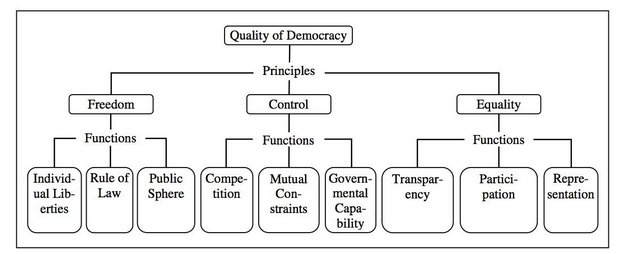
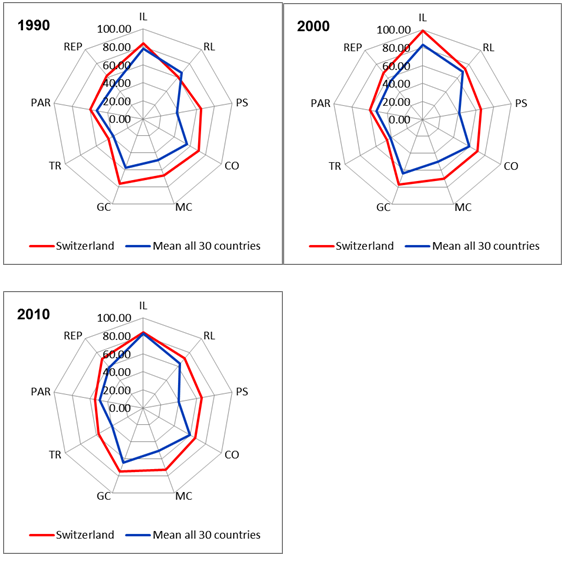
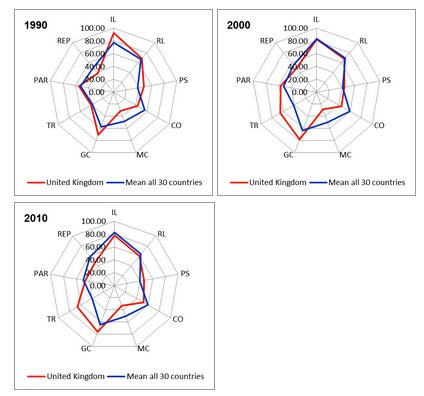
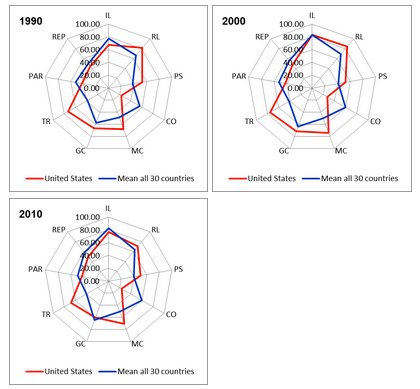
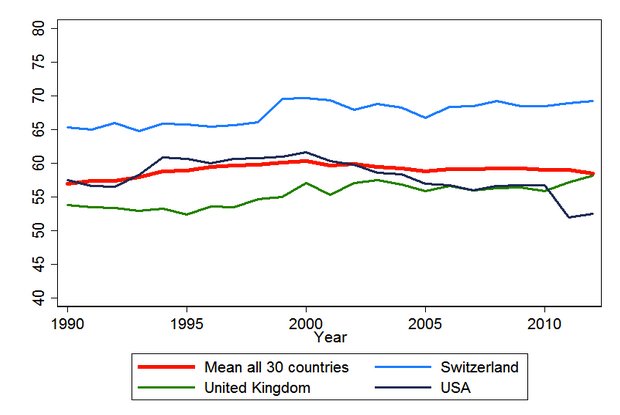




 Democratic Audit's core funding is provided by the Joseph Rowntree Charitable Trust. Additional funding is provided by the London School of Economics.
Democratic Audit's core funding is provided by the Joseph Rowntree Charitable Trust. Additional funding is provided by the London School of Economics.
RT @andy_s_64: Democracy Barometer: how to measure quality of #democracy over time https://t.co/BvQcak5xby https://t.co/fCPXCetUk1
RT @Thai_Talk: Democracy is not just about elections. True. There are key democratic principles & functions. https://t.co/eyPLOCqybm https://…
Democracy Barometer: how to measure quality of #democracy over time https://t.co/2CsMe7eD9p via @democraticaudit https://t.co/frZVzinUhU
The Democracy Barometer team on developing a new approach to evaluating the quality of democratic systems https://t.co/uAVajWC2nP
One thing you do not appear to do is to include any type of calculation about the overwhelming impact of supranational bodies like the EU on what we think of as democracy – the right of the people to elect representatives who can change the laws. For example, no UK government can amend, alter or repeal laws which impact on the tiniest minutiae of, say, agriculture. If this fits into some arrangement as great democracy, then it is not what people understand to be democracy.
When in countries like the UK, voters are saying “we want this changed” and their elected representatives tortuously conceal from them by clever words the fact that these areas of life are now controlled by unelected bureaucracies elsewhere, we simply do not have a democracy which is fit for purpose, irrespective of graphs and slideshows. In this regard the countries within the EU are, without a shadow of a doubt, losing democratic control of policy – look at the bullying of Greece which is told by the EU: “it doesn’t matter who you elect or what policies they stand for, you have to do what we say”.
A proper audit and list of what specific laws can and cannot be altered by the elected representatives sent to parliaments is the clearest way of identifying if a democracy is working, or able to work. The reason why the Swiss stopped their politicians even negotiating about joining the EU over 20 years ago was a disastrous and hapless performance on tv by EU officials who basically said that the Swiss system of referenda is ‘undemocratic and not communautaire’ in terms of the EU’ and would have to be scrapped. Well quite. The Swiss would have been barred from having any meaningful form of local or national democracy because it would be the EU that would be in control of the laws they (and indeed voters in the UK in similar situations) want to alter. If the Swiss joined the EU, that little blue ‘democratic quality’ line high up there in the last graph would collapse in a heap after a sharp downward slide because of the impact.
Democracy Barometer : a new approach to evaluating the quality of democratic systems https://t.co/TPUyEmhJGr
Democracy Barometer: a new approach to evaluating the quality of democratic systems-good news for UK,but nt for Italy https://t.co/8JuQl2CEC7
Democracy Barometer: a new approach to evaluating the quality of democratic systems https://t.co/qUy22vwtfv
Democracy Barometer: a new approach to evaluating the quality of democratic systems https://t.co/WhrI3ZZqIk